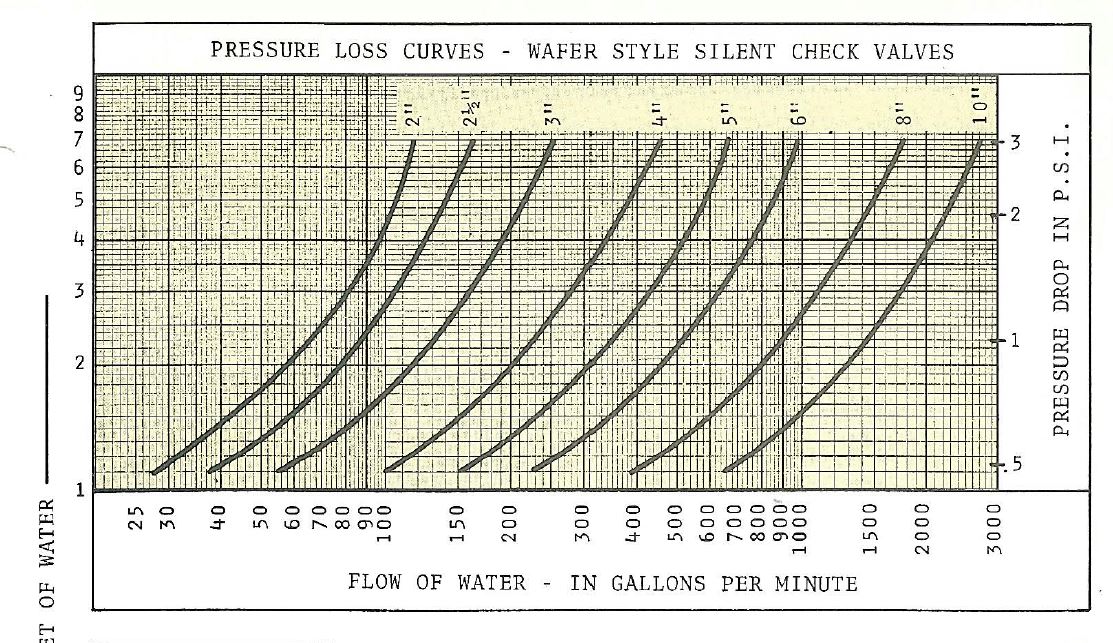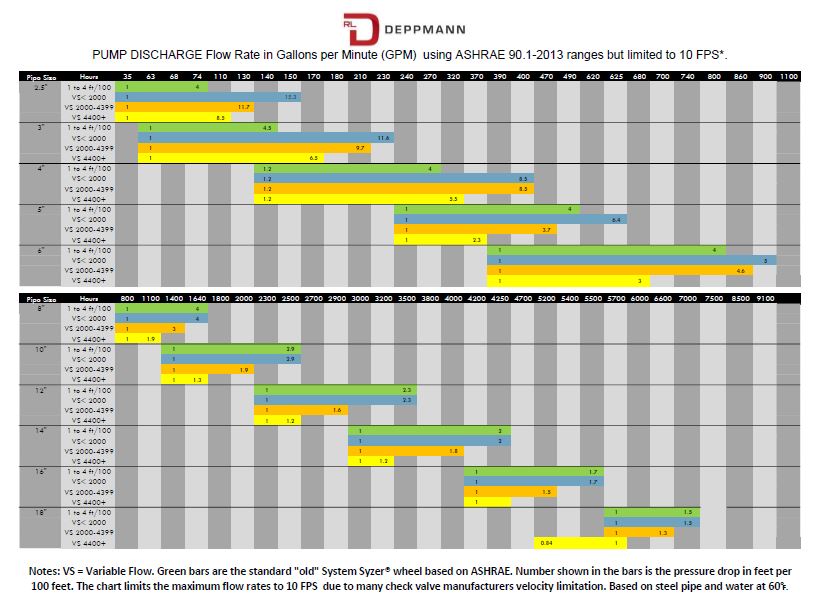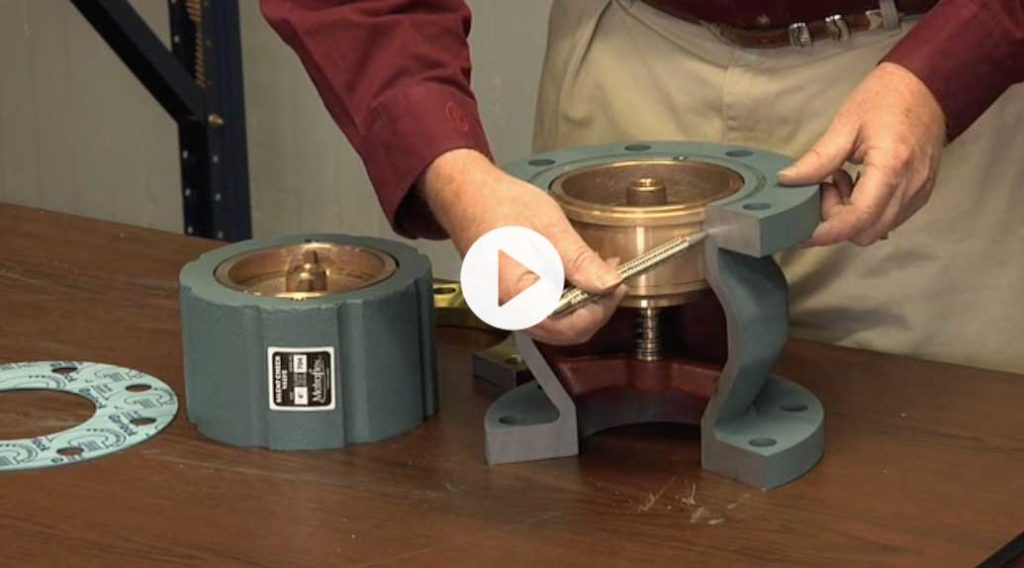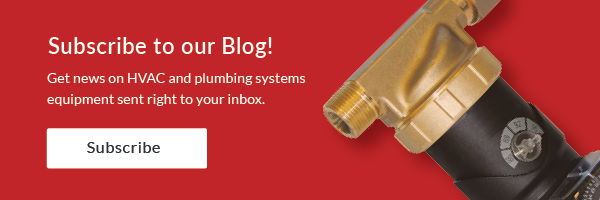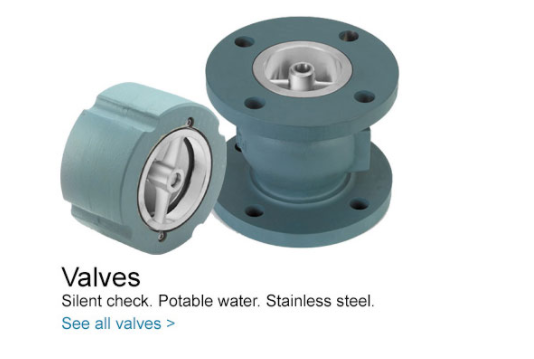 The R. L. Deppmann Monday Morning Minutes reviewed pipe sizing and flexible connectors over the past few weeks. Today we turn our attention to check valves and their use on pumps.
The R. L. Deppmann Monday Morning Minutes reviewed pipe sizing and flexible connectors over the past few weeks. Today we turn our attention to check valves and their use on pumps.
This quick blog will uncover a couple of issues with check valves that are not widely known.
Did I pique your interest?
Let’s start by looking at types of check valves and why spring-loaded valves are used on pumps.
What is the Difference Between a Swing Check Valve and a Non-Slam Check Valve?
If I am pumping out of a tank or sump, the pump manufacturers show a pump discharge check valve. The check valve may be a swing type or non-slam type. A swing check valve has a flapper attached at one point. It could look like the flapper in an old toilet tank. When the pump stops, the weight of the water pushes the flapper closed and prevents the water from going back into the tank. This could cause a noise or hammer when the flapper closes. A swing check valve prevents that water from dropping. When using a non-slam check valve, the difference occurs when the pump pressure stops. When this occurs, there is a spring in the check valve and the force of that spring closes the check valve before the water drops. It prevents the “slam” and the closing of the check is “silent”.
Do I Need a Check Valve in a Closed Hydronic System?
I am almost reluctant to start to answer this question because there are so many “what-ifs”. The only air in a hydronic system is in the compression tank or expansion tank. The rest of the system is completely filled with water. There is no place for the water to drop to!
If a closed hydronic system has the following, it does not need a check valve.
- proper fill pressure,
- proper air separation,
- proper piping to prevent gravity circulation,
- a single pump
That’s a lot of “ifs” to depend on. For that reason, we always show a check valve on the discharge of all pumps.
Sizing a Non-Slam Check Valve in a Closed Hydronic System
What do I mean by sizing? Isn’t it just a simple line size valve? Believe it or not, there are sizing requirements for check valves.
A silent check valve has a spring to assist in closing. That also means it has a spring that needs pressure to open. Most check valves take about ½ PSIG differential pressure to start opening. This is referred to as the cracking pressure. Take a look at the chart below from Metraflex.
Not only do they start at about ½ PSIG, they stop at around 3 PSIG. They really stop when the velocity gets to 10 feet per second. Most check valve manufacturers have a limit of 10 FPS velocity. If we go back to the R. L. Deppmann Monday Morning Minute chart from a few weeks ago addressing the pipe sizing from ASHRAE 90.1-2013, there is a conflict. There are some pipe sizes allowed in the ASHRAE standard that would exceed the 10 FPS velocity limit of the check valve. ASHRAE clearly states that the sizing table is subject to equipment limitations and this is one of them. I have modified the chart to show the maximum flow for a 10 FPS velocity.
Installing a Non-Slam Check Valve

There are also some limitations during the installation of check valves. The check valves may be wafer style, which is installed between two flanges. The flanges are part of the integrity of the valve. You cannot mount a butterfly valve directly to the wafer check without a spool piece. This is not just a Metraflex limitation. It is a limitation of most, if not all, wafer check valves. See the video below.
Finally, there is one other installation tip. I checked 12 different check valve manufacturers and all 12 had a limitation of the number of pipe diameters in front of a check valve when installed at a pump. The minimum number of upstream pipe diameters ranged from 3 to 14 pipe diameters upstream of the check valve. Metraflex recommends 5 to 10. Since HVAC hydronic pumping is a relatively calm application, let’s settle on 5 pipe diameters if you use Metraflex and limit the velocity. If you specify someone else, and why would you, consult them.
What About Bell & Gossett Triple Duty Valves?
Bell & Gossett Triple Duty is a non-slam check valve that also includes shut-off and balancing functions that are typically required on the discharge side of the pump, making it a great alternative to the installed cost of multiple valves. The B & G Triple Duty Valves do not require the straight pipe diameters and do not have the same velocity limits of other check valves. The B & G Triple Duty Valve should be a standard voluntary alternate in your specification. Be careful though! Other brands have many more limitations. It may seem self-serving, but why not specify and detail the check and shutoff valves but allow a B & G, and only B & G Triple Duty Valve, as an acceptable voluntary alternate? If the pricing is too high, the contractor will use the detailed valves.
Well, this was a long Minute! Next week, the R. L. Deppmann Monday Morning Minutes will look at the pump suction trim.

